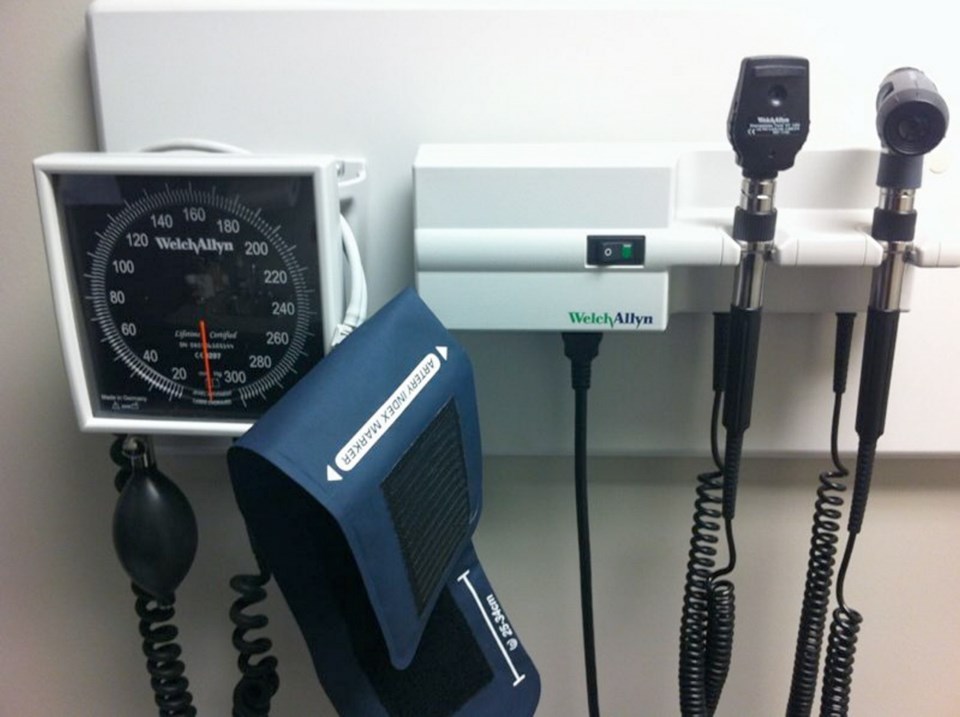Several readers have noted how much easier it is to get medical advice now that doctors are doing consults by phone. The cause, of course, is the COVID-19 outbreak, which has made traditional office visits more hazardous for patients, physicians and clinic staff.
Not every ailment can be dealt with in this manner. Some require a physical check-up.
And there is the risk that patients might call their GP with symptoms that appear straightforward, but which mask a more serious underlying condition that only a face-to-face meeting would reveal. High blood pressure is one such disorder.
Nevertheless there are good reasons for hoping this policy becomes more than a short-term response to a (hopefully) temporary crisis.
Though estimates vary, it is generally accepted that at least 500,000 British Columbians do not have a family physician. And these numbers are unlikely to improve by any great degree in the immediate future. Due to aging and burn-out, almost as many GPs are retiring as new recruits are entering the system.
Yet family doctors are the first line of defence in our health-care system. That so many of us cannot find one is unacceptable.
The previous alternative was spending hours dialling walk-in clinics looking for an opening, then waiting, possibly for days, to see someone. Now this can be done in a 10- or 15-minute phone call.
Moreover, if blood or urine tests are needed, the physician can decide that during the phone call, and you can get your results, along with an interpretation of their meaning, by visiting the LifeLabs website.
Island Health also offers this service. If a follow-up appointment in person is required, the physician will schedule it.
Where a prescription is needed, your doctor can order one online, again without the need for an office visit. You simply go to the pharmacy and pick it up.
There is one administrative obstacle that fortunately is being dealt with. For the first several months of the COVID outbreak, the fee doctors could charge for a phone consultation was lower than the fee for an office visit.
There might have been two reasons. First, the Health Ministry might have feared over-doctoring — the practice of physicians taking advantage of a much less time-consuming procedure to ramp up their billings.
Second, the office visit fee contained a component meant to reimburse physicians for the overhead costs of maintaining an office. If, as is the case, many doctors are working at home for part of the week, doesn’t it make sense to reduce the overhead portion?
The first of these objections might be sustainable if we had a sufficient supply of family physicians such that every patient who wished could have one. Since that is far from the case, the likelihood of over-doctoring is near zero.
If anything, we have serious under-doctoring, both at the family physician and specialist level.
The second objection probably does have some merit. Even so, while physicians may be working from home, most have to retain an office, and pay staff to answer phone calls, fax orders to laboratories, and meet patients who have been called in for a face-to-face consult. Telephone medicine is far from overhead-free.
Fortunately, the B.C. Medical Services Commission has recognized these points, and as of June 1, the fees for both office visits and telephone consults will be made equal.
In one sense “telemedicine” is not new. Specialists have been able for some time to read diagnostic scans and lab results at a distance, and offer an opinion.
A neurologist in Prince George can advise a family physician in Victoria about the appropriate next steps.
But what we are seeing here is genuinely new. For the first time, patients can interact with a family physician by phone and receive an entire course of treatment, including a follow-up conversation to ensure that everything went well. Office visits are still scheduled if complications arise.
In our view this appears to be a significant improvement, which hopefully will be retained once the COVID-19 outbreak passes. It is not ideal. A face-to-face office visit is usually superior, though for elderly or infirm patients, this can be a challenge.
In addition, if this procedure is adopted over the long term, a monitoring process will be needed. Are the clinical outcomes of people who receive telephone consults similar to those who have office visits? Are chronic diseases better managed because patients can talk with their physician more often?
All of this said, we do not live in an ideal world. So long as the shortage of physicians remains, telephone medicine may well be the next best solution.



